Hello all, I am relatively new to planetary imaging and recently started my journey in this AP niche with an Celestron C6, from my understanding a scope that is right at the beginning of suitable specs for planetary use. Early on, I had great results with stacking and acquisition in SharpCap, yielding excellent detail and low noise. Recently, I decided to attach a 2X barlow lens to my imaging train and was expecting much better results, however I'm experiencing a lot less detail and more noise in my stacked image (Autostakkert-->Wavesharp), I do not understand this behavior. My only question is when I attach the barlow I am obviously doubling my F/ ratio and halving my light gathering power, thus reducing my effective practical resolution? To be fair this was done on two different nights, with relatively similar seeing conditions. I did have to bump up the gain on my capture camera to compensate for the reduced aperture, which I know contributes to noise, however, I also have a cooler on my camera which should mitigate the noise even further when compared to a traditional non-cooled planetary Astro-camera. 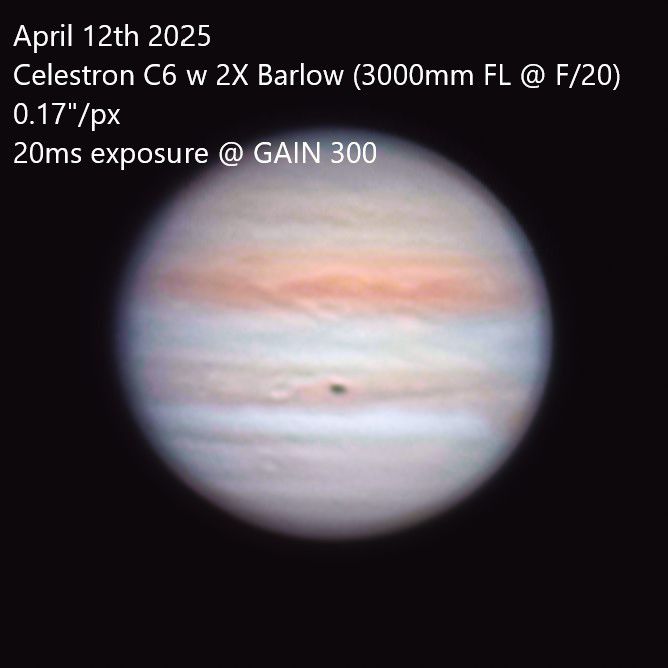 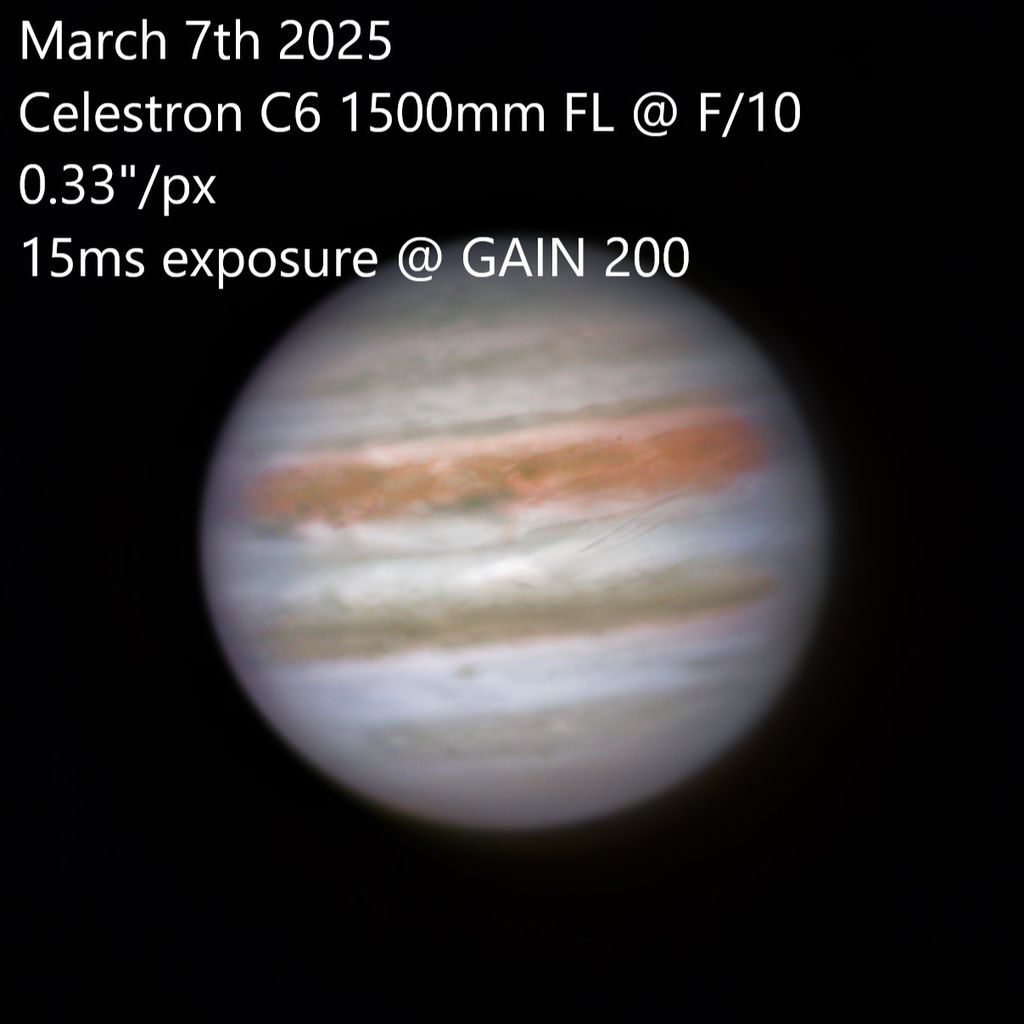 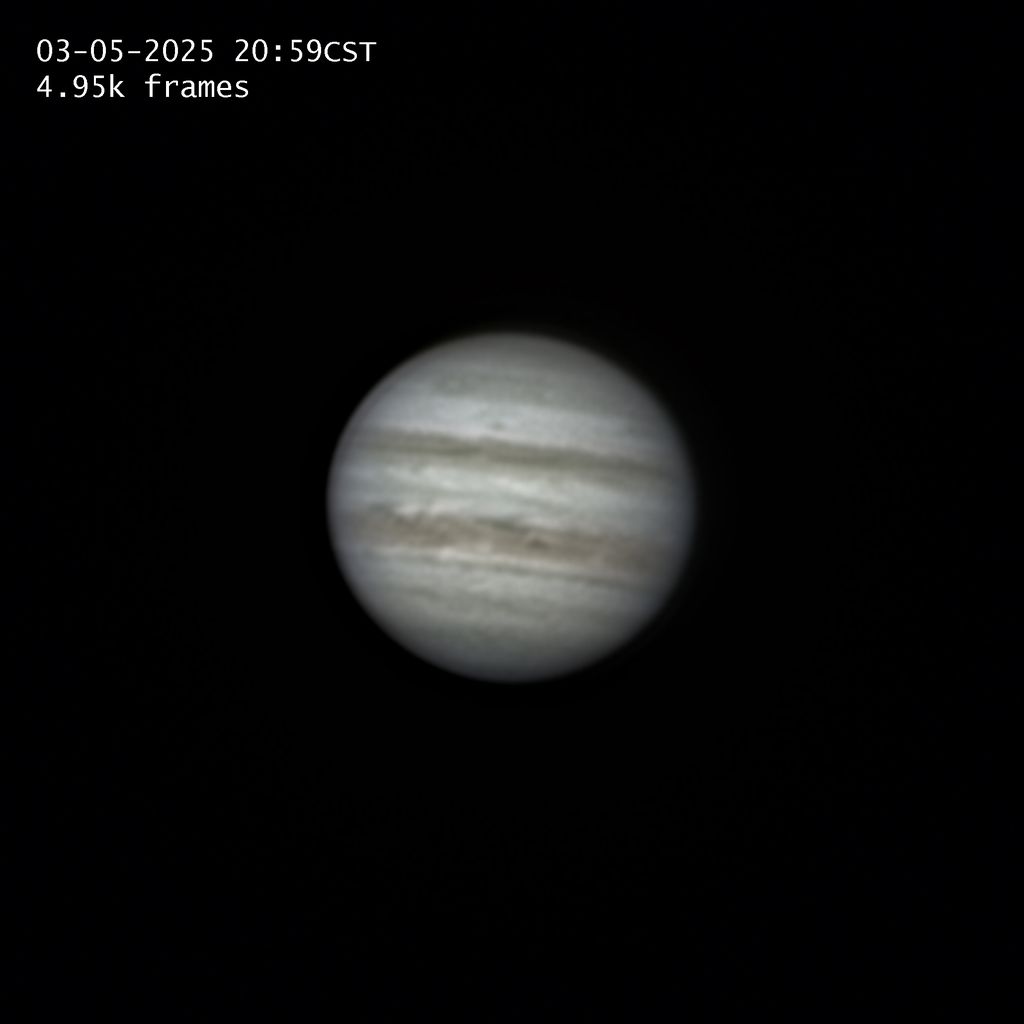 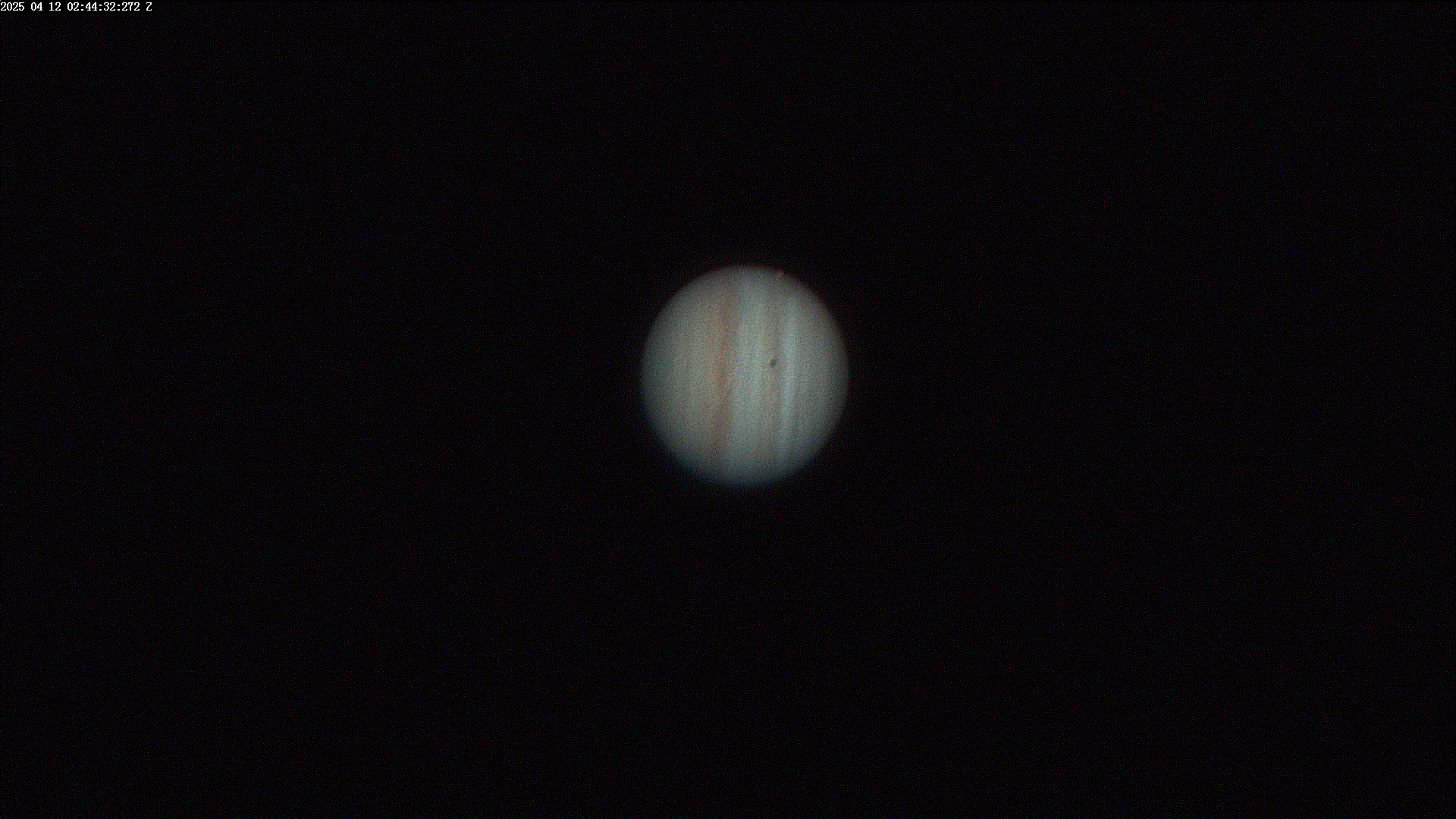 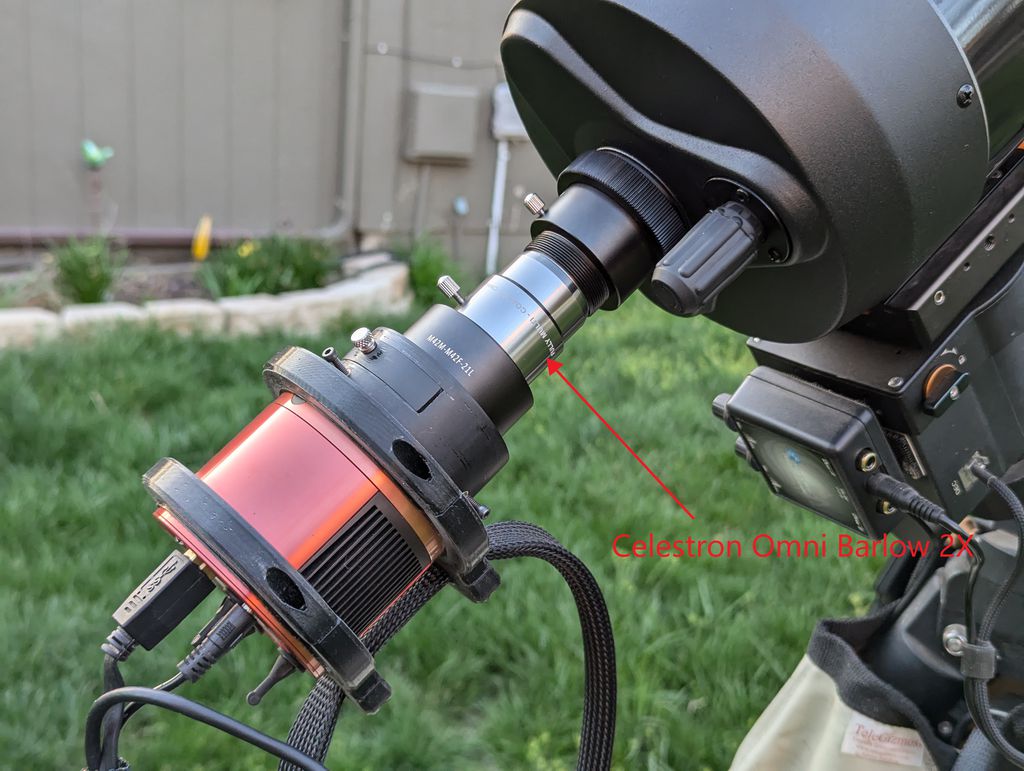 |
You cannot like this item. Reason: "ANONYMOUS".
You cannot remove your like from this item.
Editing a post is only allowed within 24 hours after creating it.
You cannot Like this post because the topic is closed.
Copy the URL below to share a direct link to this post.
This post cannot be edited using the classic forums editor.
To edit this post, please enable the "New forums experience" in your settings.
Barlow won’t affect the resolving power of the scope, or the light gathering power, it just spreads that light over more pixels. It will also make it harder to focus which is probably your issue.
Also planetary imagers generally don’t bother with cooling as it’s such a short exposure, and the cooling fan may introduce micro vibrations which might blur the image at these imaging scales.
Looking at the picture of your imaging train, The camera is way behind the barlow so you’re probably getting a lot more than 2x. Have you measured the image to get the focal length?
|
You cannot like this item. Reason: "ANONYMOUS".
You cannot remove your like from this item.
Editing a post is only allowed within 24 hours after creating it.
You cannot Like this post because the topic is closed.
Copy the URL below to share a direct link to this post.
This post cannot be edited using the classic forums editor.
To edit this post, please enable the "New forums experience" in your settings.
I'd agree with the post above. The distance to the barlow is far too high for just 2x so you are spread your signal very thinly across the sensor and it also not in focus, which is way more difficult to do when you have a large pixel scale. And you don't need a cooler at all. It may induce vibrations as well as not giving any advantage in the slightest. And the higher the gain is the noisier the frames will be.
|
You cannot like this item. Reason: "ANONYMOUS".
You cannot remove your like from this item.
Editing a post is only allowed within 24 hours after creating it.
You cannot Like this post because the topic is closed.
Copy the URL below to share a direct link to this post.
This post cannot be edited using the classic forums editor.
To edit this post, please enable the "New forums experience" in your settings.
Apologies for maybe hijacking a little, but I have a C6 and a 533 sensor. Using a un labelled (probably 2x) Barlow from when I started planetary imaging few months ago. I was getting similar results, I just haven't had a chance to ditch the Barlow and try again. Astro surface offers a 2x rescaling it can't be worse  |
You cannot like this item. Reason: "ANONYMOUS".
You cannot remove your like from this item.
Editing a post is only allowed within 24 hours after creating it.
You cannot Like this post because the topic is closed.
Copy the URL below to share a direct link to this post.
This post cannot be edited using the classic forums editor.
To edit this post, please enable the "New forums experience" in your settings.
Barlow won’t affect the resolving power of the scope, or the light gathering power, it just spreads that light over more pixels. It will also make it harder to focus which is probably your issue.
Also planetary imagers generally don’t bother with cooling as it’s such a short exposure, and the cooling fan may introduce micro vibrations which might blur the image at these imaging scales.
Looking at the picture of your imaging train, The camera is way behind the barlow so you’re probably getting a lot more than 2x. Have you measured the image to get the focal length? Now that I think about it, you are correct the light gathering power is already fixed by the main aperture. I thought I had achieved good focus at the time by using some of the focusing aids built-in to SharpCap such as contrast detection, but perhaps I could have still done better. I have yet to try focusing with a Bhatinov mask with this specific setup, but it would no doubt help. Also, I didn't know that the location of the barlow in the imaging train matters, where should I be placing it? I do have an M42 extender between the barlow and the filter drawer which is 3D printed, maybe I should remove this extender?
|
You cannot like this item. Reason: "ANONYMOUS".
You cannot remove your like from this item.
Editing a post is only allowed within 24 hours after creating it.
You cannot Like this post because the topic is closed.
Copy the URL below to share a direct link to this post.
This post cannot be edited using the classic forums editor.
To edit this post, please enable the "New forums experience" in your settings.
andrea tasselli:
I'd agree with the post above. The distance to the barlow is far too high for just 2x so you are spread your signal very thinly across the sensor and it also not in focus, which is way more difficult to do when you have a large pixel scale. And you don't need a cooler at all. It may induce vibrations as well as not giving any advantage in the slightest. And the higher the gain is the noisier the frames will be. I honestly completely overlooked the cooling fan, that is very true. Look forward to trying again with this new knowledge in consideration.
|
You cannot like this item. Reason: "ANONYMOUS".
You cannot remove your like from this item.
Editing a post is only allowed within 24 hours after creating it.
You cannot Like this post because the topic is closed.
Copy the URL below to share a direct link to this post.
This post cannot be edited using the classic forums editor.
To edit this post, please enable the "New forums experience" in your settings.
Some capturing programs would give the image scale and hence the barlow effect. If not, then just estimate the diameter of Jupiter and the apparent size and from these two numbers you will get the image scale and from that the effective focal length can be calculated.
|
You cannot like this item. Reason: "ANONYMOUS".
You cannot remove your like from this item.
Editing a post is only allowed within 24 hours after creating it.
You cannot Like this post because the topic is closed.
Copy the URL below to share a direct link to this post.
This post cannot be edited using the classic forums editor.
To edit this post, please enable the "New forums experience" in your settings.
Fabian Butkovich:
Also, I didn't know that the location of the barlow in the imaging train matters, where should I be placing it? I do have an M42 extender between the barlow and the filter drawer which is 3D printed, maybe I should remove this extender? Televue has a great write up about this if you want more details, but in short, there's essentially two types of barlows: telecentric and telenegative. Telecentric barlows offer roughly the same magnification regardless of the distance from the end of the Barlow lens, but telenegative barlows increase in magnification the further your eye or sensor is from the end of the Barlow lens. So if your Barlow is telenegative, the further your camera sensor is from the end of the Barlow element, the higher the magnification will be (perhaps well past the advertised 2x). Barlows like the Power mate are telecentric, so it matters less about how far the sensor is from the Barlow, allowing you to have accessories like an ADC in between the sensor and the barlow, while still having the same magnification.
|
You cannot like this item. Reason: "ANONYMOUS".
You cannot remove your like from this item.
Editing a post is only allowed within 24 hours after creating it.
You cannot Like this post because the topic is closed.
Copy the URL below to share a direct link to this post.
This post cannot be edited using the classic forums editor.
To edit this post, please enable the "New forums experience" in your settings.
Fabian Butkovich:
Barlow won’t affect the resolving power of the scope, or the light gathering power, it just spreads that light over more pixels. It will also make it harder to focus which is probably your issue.
Also planetary imagers generally don’t bother with cooling as it’s such a short exposure, and the cooling fan may introduce micro vibrations which might blur the image at these imaging scales.
Looking at the picture of your imaging train, The camera is way behind the barlow so you’re probably getting a lot more than 2x. Have you measured the image to get the focal length?
Now that I think about it, you are correct the light gathering power is already fixed by the main aperture. I thought I had achieved good focus at the time by using some of the focusing aids built-in to SharpCap such as contrast detection, but perhaps I could have still done better. I have yet to try focusing with a Bhatinov mask with this specific setup, but it would no doubt help.
Also, I didn't know that the location of the barlow in the imaging train matters, where should I be placing it? I do have an M42 extender between the barlow and the filter drawer which is 3D printed, maybe I should remove this extender? Yes the location matters for a barlow, a described above the further you are from the barlow the higher the magnification factor. For a focal extender or powermate that’s not the case. In your situation which I think is C6 with 183mc pro, I would stick to native FL as you are fairly close to optimum sampling with that camera.
|
You cannot like this item. Reason: "ANONYMOUS".
You cannot remove your like from this item.
Editing a post is only allowed within 24 hours after creating it.
You cannot Like this post because the topic is closed.
Copy the URL below to share a direct link to this post.
This post cannot be edited using the classic forums editor.
To edit this post, please enable the "New forums experience" in your settings.
No TV Powermate is truly telecentric, the 5x being the worst offender, see: Tele Vue Optics: Powermates |
You cannot like this item. Reason: "ANONYMOUS".
You cannot remove your like from this item.
Editing a post is only allowed within 24 hours after creating it.
You cannot Like this post because the topic is closed.
Copy the URL below to share a direct link to this post.
This post cannot be edited using the classic forums editor.
To edit this post, please enable the "New forums experience" in your settings.
andrea tasselli:
No TV Powermate is truly telecentric, the 5x being the worst offender, see:
Tele Vue Optics: Powermates Right, but they are better than a non-telecentric Barlow in that regard, and that was ultimately the point I was after. With a powermate or other telecentric Barlow, you're still reasonably close to the advertised magnification factor, moreso than you would be with a Barlow that is not telecentric.
|
You cannot like this item. Reason: "ANONYMOUS".
You cannot remove your like from this item.
Editing a post is only allowed within 24 hours after creating it.
You cannot Like this post because the topic is closed.
Copy the URL below to share a direct link to this post.
This post cannot be edited using the classic forums editor.
To edit this post, please enable the "New forums experience" in your settings.
I always preferred tele-negative Barlows as they allow you to fine tune the amplification factor.
Place the Barlow lens cell directly on the camera nosepiece for around 1.3x, or add distance with spacers etc to increase power. My favourite barlow is the APM 2.7x coma correcting barlow…. Very versatile.
You can calculate to amplification power you would get with any barlow by:
Power=(BarlowFL+distance)/BarlowFL
‘distance’ is the length between last element of the barlow and the sensor. The barlow focal length can be hard to find though, not many manufacturers list it.
For the OPs set up, I would unscrew the nosepiece of the Barlow and place it directly on to the nosepiece of the camera which would get you to around F12/F13 which would be a good place to be with the ASI183mc.
|
You cannot like this item. Reason: "ANONYMOUS".
You cannot remove your like from this item.
Editing a post is only allowed within 24 hours after creating it.
You cannot Like this post because the topic is closed.
Copy the URL below to share a direct link to this post.
This post cannot be edited using the classic forums editor.
To edit this post, please enable the "New forums experience" in your settings.







